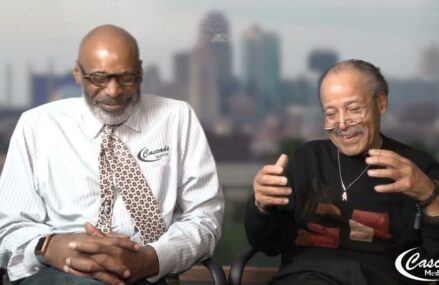By RUSSELL CONTRERAS
In this July 25, 2012 photo provided by the University of New Mexico, Tonita Gonzales, a curandera, or traditional Mexican folk healer, prays during a ceremony at the University of New Mexico during a workshop on curanderismo. The Maxwell Museum of Anthropology in Albuquerque, N.M. is scheduled to host an exhibit this summer on curanderismo and will invite healers from Latin America to give talks on a traditional healing field that is growing in the United States thanks to immigration from Latin America. (AP Photo/Courtesy of the University of New Mexico)
ALBUQUERQUE, N.M. (AP) — Evil eye. Magical fright. A sick soul.
These are all afflictions usually treated by traditional Mexican healers known as curanderos. And this summer, an Albuquerque museum is planning an exhibit on the magical art of curanderismo, or the practice of traditional Mexican folk healing.
In May, the Maxwell Museum of Anthropology is scheduled to open an exhibit that will offer displays on curandero healing through herbs to getting a soul cleansing, also known as a limpia. Also on display will be popular curandero instruments from incense burners used in rituals to cups necessary to cure a spiritual illness.
“We’re going to try to fit as much as we can so people can understand the roots of curanderismo and understand how it’s used and practiced,” said Devorah Romanek, curator of exhibits for the Maxwell Museum of Anthropology.
The exhibit will coincide with a University of New Mexico curanderismo class that is expected to draw more than 200 people from around the nation.
Curanderismo is the art of using traditional healing methods like herbs and plants to treat various ailments. Long practiced in indigenous villages of Mexico and other parts of Latin America, curanderos also could be found in parts of New Mexico, south Texas, Arizona and California. In recent years, some curanderos have been found practicing in New York and in Georgia as immigration from Mexico has expanded into that areas.
Anthropologists believe curanderismo remained popular among poor Latinos because they didn’t have access to health care. But they believe the field now is gaining traction among those who seek to use alternative medicine.
Among the ailments curanderos treat are mal de ojo, or evil eye, and susto, magical fright.
Mal de ojo is the belief that an admiring look or a stare can weaken someone, mainly a child, leading to bad luck, even death.
Susto is a folk illness linked to fright experience like an automobile accident or tipping over an unseen object. Those who believe they are inflicted with susto say only a curandero can cure them.
Eliseo “Cheo” Torres, the curator of the exhibit and author of “Curandero: A Life in Mexican Folk Healing,” said curanderismo is gaining in popularity in the U.S. due to immigration from Latin America. “But there are also new people who want to learn about the field and appreciate its value,” he said. “They also incorporate Chinese and Cuban traditional healing.”
Torres is the lead teacher of the University of New Mexico curanderismo workshop in July and said the class typically attracts people from New York, California and Indiana.
The Maxwell Museum of Anthropology exhibit, which will be housed next to where classes will take place, will serve as a another educational outlet for visiting students wishing to learn more about the field, Torres said.
Included in the exhibit will be popular modern images related to curanderismo like folk saints La Santa Muerte and Jesus Malverde, said Romanek.
La Santa Muerte, or Saint Death, is a popular folk saint in Mexican and parts of the U.S. that devotees pray to help with employment or stop a lover from cheating. Jesus Malverde, a saint popular with drug cartels, also claims followers seeking protection.
“Curanderismo is so diverse now,” said Torres. “It is evolving.”



